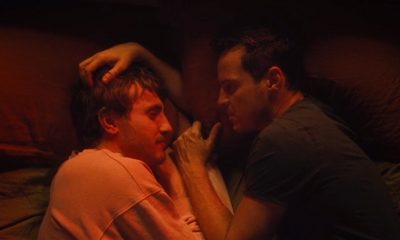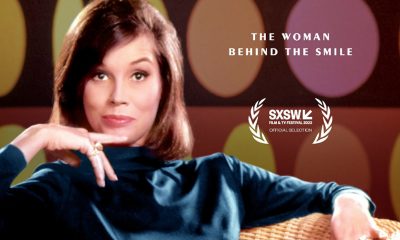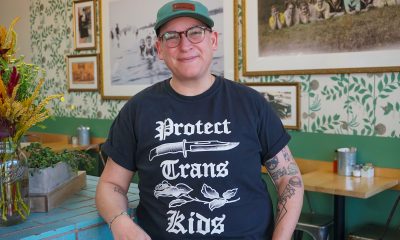Books
FALL ARTS 2016: ‘Looking’ for a good book?
Raising trans kids, Milwaukee’s gay history, queer Alaskan poets and more
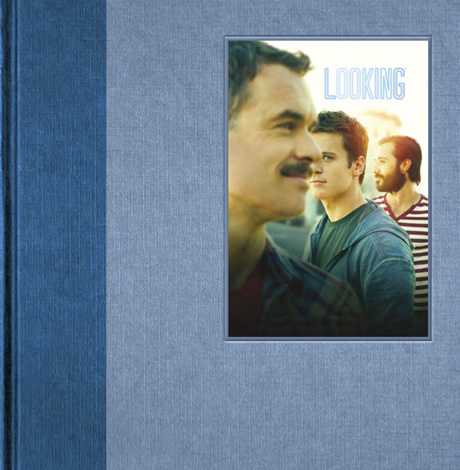
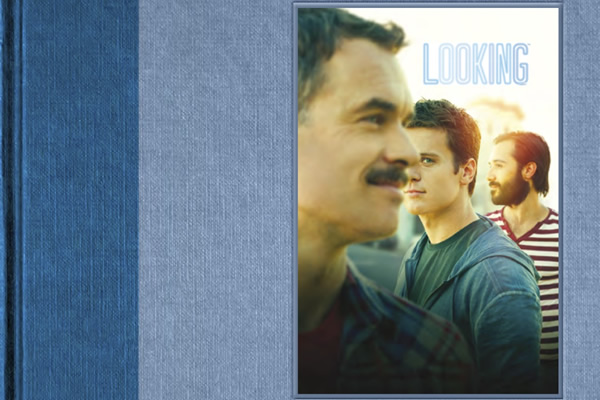
The ‘Looking’ coffeetable book features scenes from the memorable HBO series. (Photo courtesy First Third Books)
Before it was possible to Google terms like “gender creative,” Julie Tarney had to trust her instincts when her 2-year-old son Harry told her in 1992, “Inside my head I’m a girl.” “My Son Wears Heels: One Mom’s Journey from Clueless to Kickass” (out this week for $24.95) is Tarney’s story of unwavering support for her son by listening carefully, keeping an open mind, and putting Harry’s happiness before society’s edicts.
Originally chronicled in a serialized national column in the Guardian newspaper in the U.K., “Trans: A Memoir by Juliet Jacques” (out Nov. 15, $19.95) provides an insider’s insight into gender politics and how popular media is either ignoring or distorting the transgender movement. Jacques also provides a completely honest account of her sex reassignment surgery at the age of 30 and the journey to redefine her life for her family, her friends and herself.
“Before Pictures” by Douglas Crimp (out Sept. 22, $39) ticks all the boxes for anyone who has followed the long career of art critic Crimp, who famously coined the term “The Pictures Generation” in reference to the postmodern work of artists like Sherrie Levine and Cindy Sherman during the 1970s and ‘80s. The memoir follows his experiences as a young gay man in New York City in the 1960s, partying alongside the Warhol crowd, and eventually becoming an activist as AIDS began to devastate both the gay and arts communities.
Running parallel to Crimp’s memoir, “Life and Death on the New York Dance Floor, 1980-1983” by Tim Lawrence (out Sept. 30, $27.95) examines the intersection of New York City’s party and arts scenes in the early ‘80s, a world of intense creativity, risk and cultural crossover. Lawrence’s history outlines the convergence of disco, punk, hip hop, salsa and jazz with performance and visual art, video, film and fashion, all leading to the development of 21st century dance music.
Having “Looking” withdrawal now that the series and movie are over? Savor memories of the uber-gay HBO series with a coffeetable book of photos from the show. It’s out in October in two versions — one for $59 and another for $88 that features a DVD with interviews, behind-the-scenes footage from the movie and a signed cast photo. Jump fast if you’re interested — only 500 copies of each version are being issued. Details at firstthirdbooks.com.
While New York or San Francisco might seem like the epicenters of America’s gay rights movement, “LGBT Milwaukee (Images of Modern America)” by Michail Takach ($22.99) seeks to correct that notion, highlighting the history of gay and lesbian culture that was evolving in the Rust Belt city of Milwaukee from the early 1960s. As part of the Wisconsin LGBT History Project, the book’s 150 photographs with detailed captions focus on secret back room hangouts to mega-discos to drag queen culture.
“Becoming Who I Am: Young Men on Being Gay” (out Sept. 19; $27.95) is the result of extensive interviews with about 40 young gay men whose average age is 20. Author Ritch C. Savin-Williams explores their first inklings of same-sex attraction, first sexual experiences and their thoughts on love and long-term relationships.
Young Adult, or YA, fiction is the fastest-growing segment of the publishing market, continuing to offer sophisticated stories and viewpoints that are just as interesting for the over-18 reader. “You Know Me Well” by David Levithan and Nina LaCour ($18.99) is a coming-of-age story set in San Francisco during Pride Week, as two high school classmates, Mark and Kate, who have never spoken, suddenly run into each other one night in the city while avoiding the people they want to be with. Mark is struggling with his unrequited feelings for his best friend Ryan, while Kate is fearful of finally meeting the girl she’s loved from afar.
Tippi Hedren, one of the most famous Hitchcock blondes, releases her memoir “Tippi: a Memoir” ($28.99) on Nov. 1.
“Girl Mans Up” by M-E Girard (released this month, $17.99) is another YA title that will resonate as Pen tries to navigate a world where the cultural expectations from people around her, from her parents to her friends, make it difficult for her to simply be who she is — a girl who isn’t interested in looking feminine, has strong feelings for other girls, and, at the heart of it all, is still a girl at the end of the day who doesn’t want to pretend to be something she’s not.
“It Looks Like This” (out this month, $16.99) by debut author Rafi Mittlefehldt is a tale of first love and loss, following Mike as he and his family move to a new city and he starts at a new high school, constantly urged by his father to give up art for sports as he befriends new kid Sean. Ultimately hopeful, the story doesn’t shy away from the fear that compels parents to send their kids to “straight camp” or the bittersweet need for acceptance from the people we love.
Flynn’s girlfriend is missing, but that’s the least of his problems in “Last Seen Leaving” by Caleb Roehrig (Oct. 4; $17.99). This suspenseful mystery forces Flynn to confront his own demons while being scrutinized by cops and friends, with wit, grit and realism.
“Murder Ink” (Oct. 1; $14.99) is the first offering in the Dakota Jones, P.I. Mystery series, as Jones, the owner of Runaway Investigations, tries to spend a quiet holiday with her girlfriend Kris, a homicide officer, until Kris gets caught up in the investigation of the sordid murder of the proprietor of Fantasy Escorts, who Jones once worked for, back in the old days.
Alaska may, indeed, seem like another country, a place where people go to reinvent themselves in a fresh landscape, as evident in “Building Fires in the Snow: A Collection of Alaska LGBTQ Short Fiction and Poetry” (out this week, $29.95). The anthology gathers stories and poems from across the wide spectrum of Alaska’s LGBT community, shining a light on the everyday lives of gay and lesbian individuals and families within a historically diverse culture.
“The Sea Is Quiet Tonight: a Memoir” by Michael H. Ward (Nov. 1, $19.99) is, by turns, a painful reminder and inspiration tale of both the love and loss experienced by so many during the early years of the AIDS epidemic. Ward details his partner Mark’s diagnosis and death with honesty, delving into the closeness that can develop between partners, family and friends, even as death is imminent.
Using a collection of characters from pop culture, activism, and academia, “Queer: A Graphic History” by Meg-John Barker and Julia Scheele (Nov. 15, $17.95) uses the graphic novel to guide readers through the history of identity politics, queer theory and gender roles. Fresh interpretations and clever illustrations help bring new life to academic constructs and an understanding of the intersection of biology, psychology, and modern culture.
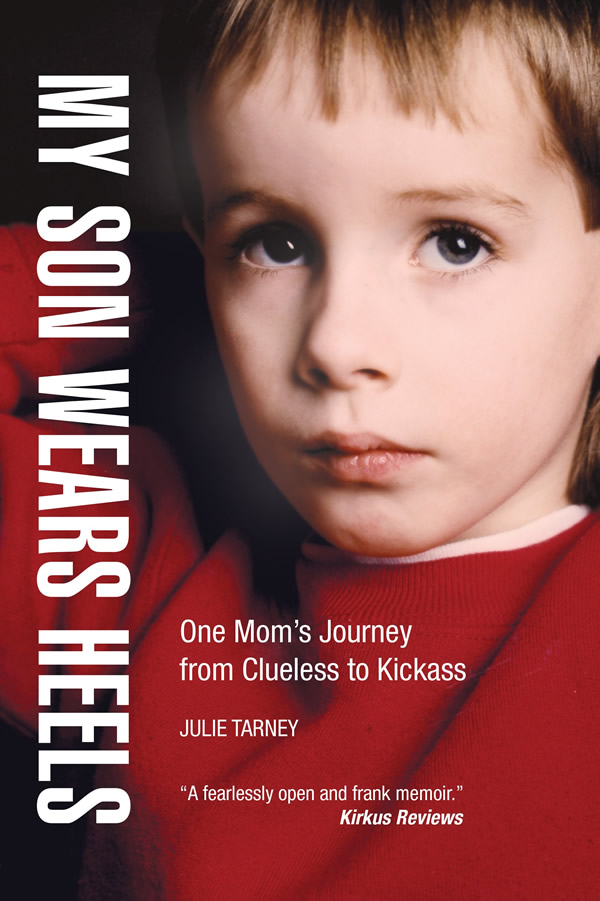
‘My Son Wears Heels’ by Julie Tarney tells of her experiences raising a gender non-conforming son. (Photo courtesy University of Wisconsin Press)
Books
New book offers observations on race, beauty, love
‘How to Live Free in a Dangerous World’ is a journey of discovery

‘How to Live Free in a Dangerous World: A Decolonial Memoir’
By Shayla Lawson
c.2024, Tiny Reparations Books
$29/320 pages
Do you really need three pairs of shoes?
The answer is probably yes: you can’t dance in hikers, you can’t shop in stilettos, you can’t hike in clogs. So what else do you overpack on this long-awaited trip? Extra shorts, extra tees, you can’t have enough things to wear. And in the new book “How to Live Free in a Dangerous World” by Shayla Lawson, you’ll need to bring your curiosity.

Minneapolis has always been one of their favorite cities, perhaps because Shayla Lawson was at one of Prince’s first concerts. They weren’t born yet; they were there in their mother’s womb and it was the first of many concerts.
In all their travels, Lawson has noticed that “being a Black American” has its benefits. People in other countries seem to hold Black Americans in higher esteem than do people in America. Still, there’s racism – for instance, their husband’s family celebrates Christmas in blackface.
Yes, Lawson was married to a Dutch man they met in Harlem. “Not Haarlem,” Lawson is quick to point out, and after the wedding, they became a housewife, learned the language of their husband, and fell in love with his grandmother. Alas, he cheated on them and the marriage didn’t last. He gave them a dog, which loved them more than the man ever did.
They’ve been to Spain, and saw a tagline in which a dark-skinned Earth Mother was created. Said Lawson, “I find it ironic, to be ordained a deity when it’s been a … journey to be treated like a person.”
They’ve fallen in love with “middle-American drag: it’s the glitteriest because our mothers are the prettiest.” They changed their pronouns after a struggle “to define my identity,” pointing out that in many languages, pronouns are “genderless.” They looked upon Frida Kahlo in Mexico, and thought about their own disability. And they wish you a good trip, wherever you’re going.
“No matter where you are,” says Lawson, “may you always be certain who you are. And when you are, get everything you deserve.”
Crack open the front cover of “How to Live Free in a Dangerous World” and you might wonder what the heck you just got yourself into. The first chapter is artsy, painted with watercolors, and difficult to peg. Stick around, though. It gets better.
Past that opening, author Shayna Lawson takes readers on a not-so-little trip, both world-wide and with observant eyes – although it seems, at times, that the former is secondary to that which Lawson sees. Readers won’t mind that so much; the observations on race, beauty, love, the attitudes of others toward America, and finding one’s best life are really what takes the wheel in this memoir anyhow. Reading this book, therefore, is not so much a vacation as it is a journey of discovery and joy.
Just be willing to keep reading, that’s all you need to know to get the most out of this book. Stick around and “How to Live Free in a Dangerous World” is what to pack.
The Blade may receive commissions from qualifying purchases made via this post.
Books
Story of paralysis and survival features queer characters
‘Unswerving: A Novel’ opens your eyes and makes you think

‘Unswerving: A Novel’
By Barbara Ridley
c.2024, University of Wisconsin Press
$19.95 / 227 pages
It happened in a heartbeat.
A split-second, a half a breath, that’s all it took. It was so quick, so sharp-edged that you can almost draw a line between before and after, between then and now. Will anything ever be the same again? Perhaps, but maybe not. As in the new book “Unswerving” by Barbara Ridley, things change, and so might you.

She could remember lines, hypnotizing yellow ones spaced on a road, and her partner, Les, asleep in the seat beside her. It was all so hazy. Everything Tave Greenwich could recall before she woke up in a hospital bed felt like a dream.
It was as though she’d lost a month of her life.
“Life,” if you even wanted to call it that, which she didn’t. Tave’s hands resembled claws bent at the wrist. Before the accident, she was a talented softball catcher but now she could barely get her arms to raise above her shoulders. She could hear her stomach gurgle, but she couldn’t feel it. Paralyzed from the chest down, Tave had to have help with even the most basic care.
She was told that she could learn some skills again, if she worked hard. She was told that she’d leave rehab some day soon. What nobody told her was how Les, Leslie, her partner, girlfriend, love, was doing after the accident.
Physical therapist Beth Farringdon was reminded time and again not to get over-involved with her patients, but she saw something in Tave that she couldn’t ignore. Beth was on the board of directors of a group that sponsored sporting events for disabled athletes; she knew people who could serve as role models for Tave, and she knew that all this could ease Tave’s adjustment into her new life. It was probably not entirely in her job description, but Beth couldn’t stop thinking of ways to help Tave who, at 23, was practically a baby.
She could, for instance, take Tave on outings or help find Les – even though it made Beth’s own girlfriend, Katy, jealous.
So, here’s a little something to know before you start reading “Unswerving”: author Barbara Ridley is a former nurse-practitioner who used to care for patients with spinal cord injuries. That should give readers a comfortable sense of satisfaction, knowing that her experiences give this novel an authenticity that feels right and rings true, no faking.
But that’s not the only appeal of this book: while there are a few minor things that might have readers shaking their heads (HIPAA, anyone?), Ridley’s characters are mostly lifelike and mostly likable. Even the nasties are well done and the mysterious character that’s there-not-there boosts the appeal. Put everyone together, twist a little bit to the left, give them some plotlines that can’t ruined by early guessing, and you’ve got a quick-read novel that you can enjoy and feel good about sharing.
And share you will because this is a book that may also open a few eyes and make readers think. Start “Unswerving” and you’ll (heart) it.
The Blade may receive commissions from qualifying purchases made via this post.
Books
Examining importance of queer places in history of arts and culture
‘Nothing Ever Just Disappears’ shines with grace and lyrical prose

‘Nothing Ever Just Disappears: Seven Hidden Queer Histories’
By Diarmuid Hester
c.2024, Pegasus Books
$29.95/358 pages
Go to your spot.
Where that is comes to mind immediately: a palatial home with soaring windows, or a humble cabin in a glen, a ramshackle treehouse, a window seat, a coffeehouse table, or just a bed with a special blanket. It’s the place where your mind unspools and creativity surges, where you relax, process, and think. It’s the spot where, as in the new book “Nothing Ever Just Disappears” by Diarmuid Hester, you belong.

Clinging “to a spit of land on the south-east coast of England” is Prospect Cottage, where artist and filmmaker Derek Jarman lived until he died of AIDS in 1994. It’s a simple four-room place, but it was important to him. Not long ago, Hester visited Prospect Cottage to “examine the importance of queer places in the history of arts and culture.”
So many “queer spaces” are disappearing. Still, we can talk about those that aren’t.
In his classic book, “Maurice,” writer E.M. Forster imagined the lives of two men who loved one another but could never be together, and their romantic meeting near a second-floor window. The novel, when finished, “proved too radical even for Forster himself.” He didn’t “allow” its publication until after he was dead.
“Patriarchal power,” says Hester, largely controlled who was able to occupy certain spots in London at the turn of the last century. Still, “queer suffragettes” there managed to leave their mark: women like Vera Holme, chauffeur to suffragette leader Emmeline Pankhurst; writer Virginia Woolf; newspaperwoman Edith Craig, and others who “made enormous contributions to the cause.”
Josephine Baker grew up in poverty, learning to dance to keep warm, but she had Paris, the city that “made her into a star.” Artist and “transgender icon” Claude Cahun loved Jersey, the place where she worked to “show just how much gender is masquerade.” Writer James Baldwin felt most at home in a small town in France. B-filmmaker Jack Smith embraced New York – and vice versa. And on a personal journey, Hester mourns his friend, artist Kevin Killian, who lived and died in his beloved San Francisco.
Juxtaposing place and person, “Nothing Ever Just Disappears” features an interesting way of presenting the idea that both are intertwined deeper than it may seem at first glance. The point is made with grace and lyrical prose, in a storyteller’s manner that offers back story and history as author Diarmuid Hester bemoans the loss of “queer spaces.” This is really a lovely, meaningful book – though readers may argue the points made as they pass through the places included here. Landscapes change with history all the time; don’t modern “queer spaces” count?
That’s a fair question to ask, one that could bring these “hidden” histories full-circle: We often preserve important monuments from history. In memorializing the actions of the queer artists who’ve worked for the future, the places that inspired them are worth enshrining, too.
Reading this book may be the most relaxing, soothing thing you’ll do this month. Try “Nothing Ever Just Disappears” because it really hits the spot.
The Blade may receive commissions from qualifying purchases made via this post.

